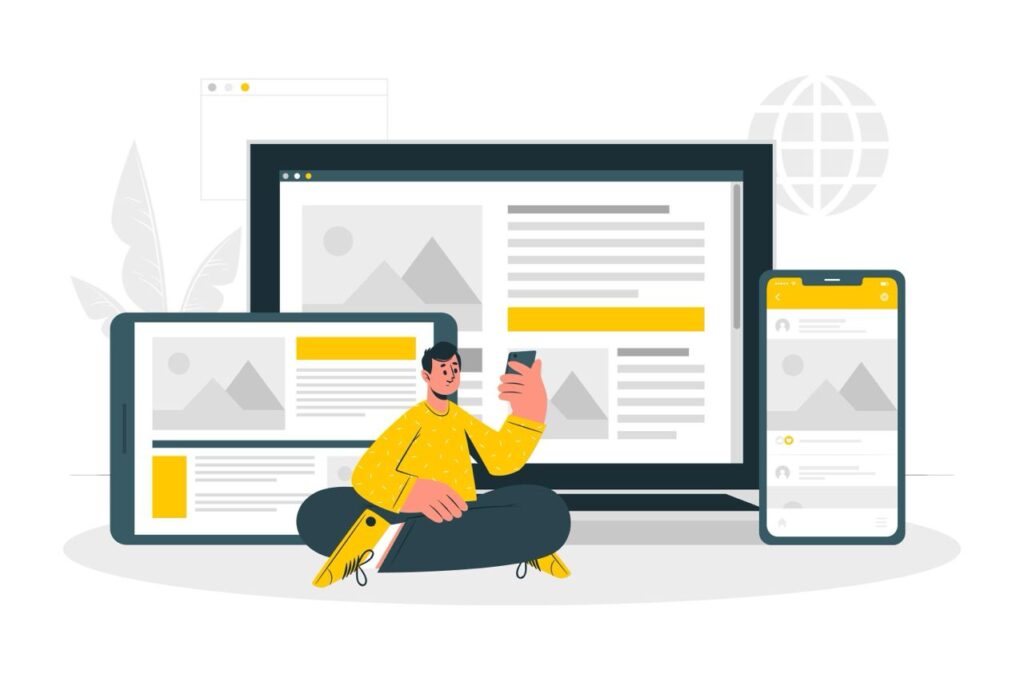In the fast-paced world we live in, the way we learn is evolving. Microlearning, a trend that has gained significant traction in the eLearning domain, caters to this change by offering bite-sized learning experiences designed to meet specific learning outcomes. This blog explores the concept of microlearning, its benefits, challenges, effectiveness, and its future in the educational landscape.
What is microlearning?
Microlearning is an eLearning strategy that involves delivering content in small, specific bursts, allowing learners to consume information in manageable chunks. It is typically characterized by short-term focused strategies aimed at teaching a narrow skill or knowledge area. Microlearning can be delivered through various formats, including text, video, audio, and interactive quizzes, making it a versatile approach to education.

A few content microlearning examples:
Microlearning has become a cornerstone of efficient and effective learning strategies, particularly in the digital age where attention spans are shorter and time is a precious commodity. By breaking down complex information into digestible, focused segments, microlearning not only enhances retention but also makes learning more accessible and engaging. Here are some developed examples of microlearning content that illustrate its practical application and versatility:
1. 2-minute tutorial videos on a microlearning platform
Imagine a platform dedicated to digital marketing skills, offering a series of 2-minute videos, each focusing on a specific tool or tactic. One video might demonstrate the basics of SEO keyword research, while another could show how to set up a targeted Facebook ad campaign. These bite-sized tutorials are designed to deliver actionable insights quickly, enabling learners to apply new skills immediately. This format is perfect for professionals looking to update their skills without investing hours in longer courses.
2. Interactive quizzes on a microlearning app to reinforce language skills
Language learning apps like Duolingo or Babbel excel in using microlearning strategies, particularly through interactive quizzes. After a brief lesson on new vocabulary or grammar rules, learners can immediately test their understanding through short, dynamic quizzes. These quizzes might involve matching words to their meanings, filling in blanks in sentences, or conversing with an AI chatbot. This immediate application of knowledge reinforces learning and makes the process more engaging and effective.
3. Infographics summarizing key concepts or processes
Infographics are powerful microlearning tools that can summarize complex concepts or processes in a visually appealing and easy-to-understand format. For instance, a healthcare app might use an infographic to explain the steps of CPR (Cardiopulmonary Resuscitation), highlighting key actions with simple illustrations and brief descriptions. Similarly, a business training module could use an infographic to outline the stages of project management, from initiation to closure, providing a quick reference that learners can easily remember and apply.
These examples showcase the flexibility and effectiveness of microlearning in catering to diverse learning needs and preferences. By leveraging concise, focused content delivered through engaging formats, microlearning can significantly enhance the learning experience, making it more accessible, enjoyable, and impactful.

Microlearning Vs. Macrolearning
While microlearning focuses on delivering concise content aimed at a specific learning outcome, macrolearning deals with comprehensive subject matter, requiring longer periods to cover. Microlearning is ideal for on-the-go learning and reinforcing specific skills or knowledge, whereas macrolearning is suited for in-depth understanding and mastery of a subject.
5 Benefits of microlearning
- Efficiency and flexibility: Microlearning allows learners to quickly acquire and apply new knowledge, fitting learning into their schedules.
- Higher engagement: Short, interactive content captures attention more effectively, leading to better engagement rates.
- Improved retention: Focused content makes it easier for learners to retain and recall information.
- Accessibility: Microlearning can be easily accessed on various devices, making learning possible anywhere, anytime.
- Cost-effective: Developing microlearning content is often less costly and time-consuming, offering an efficient solution for organizations.
5 Challenges of microlearning
- Content simplification: Distilling complex information into bite-sized content without losing its essence can be challenging.
- Learner discipline: Self-motivation is crucial, as the onus is on learners to engage with the content regularly.
- Integration with overall learning strategy: Microlearning should complement a broader learning strategy, not replace it.
- Measuring effectiveness: Tracking and assessing the impact of microlearning on long-term knowledge retention can be difficult.
- Content update frequency: Keeping microlearning content updated and relevant requires ongoing effort and resources.

How effective is microlearning?
Studies and real-world applications have shown that microlearning is highly effective for knowledge retention, skill acquisition, and learner engagement. Its targeted approach and flexibility cater to the modern learner’s needs, making it a valuable component of contemporary eLearning strategies.
Real-world successful microlearning examples
Microlearning has demonstrated its effectiveness across various platforms, revolutionizing the way individuals acquire new skills and knowledge. Here are some real-world examples where microlearning has been successfully implemented, showcasing its broad appeal and effectiveness.
Duolingo: mastering languages through bite-sized lessons
Duolingo stands as a testament to the power of microlearning in language acquisition. With its user-friendly interface, the app breaks down language learning into small, manageable lessons that users can complete daily. These lessons include a mix of listening exercises, flashcards, and interactive quizzes, all designed to fit into the user’s lifestyle without overwhelming them. The success of Duolingo, evidenced by its millions of active users worldwide, highlights how microlearning can make learning new languages not only accessible but also enjoyable and highly effective.
LinkedIn learning: professional development in small doses
LinkedIn Learning capitalizes on the microlearning trend by offering short, skill-based videos to professionals seeking to broaden their expertise or acquire new skills. These videos cover a wide range of topics, from software proficiency to leadership skills, and are tailored to fit into the busy schedules of working professionals. By providing concise, focused content, LinkedIn Learning enables users to quickly apply what they’ve learned in their professional lives, demonstrating the practical value and flexibility of microlearning in continuing education.
Babbel: tailored language learning for busy schedules
Babbel embraces microlearning by offering microlessons that make mastering a new language feasible for people with hectic schedules. Each lesson is designed to last about 10-15 minutes, focusing on conversational skills and practical vocabulary that learners can start using right away. This approach not only makes language learning more manageable but also ensures that users can see progress quickly, keeping motivation high. Babbel’s success in attracting a dedicated user base confirms the effectiveness of microlearning in overcoming the challenges of adult education, particularly in the context of language acquisition.
These examples underscore the versatility and impact of microlearning across different domains, from language learning to professional development. By delivering content in short, focused bursts, these platforms cater to the modern learner’s need for flexible, efficient, and engaging educational experiences. The success of Duolingo, LinkedIn Learning, and Babbel illustrates the growing recognition of microlearning as a powerful tool in the digital learning landscape, capable of making lifelong learning more accessible and appealing to a global audience.

Future of microlearning
The future of microlearning looks bright, with advancements in AI, AR and VR in education, and machine learning expected to personalize learning experiences further. As the demand for flexible and efficient learning solutions grows, microlearning, enhanced by the immersive experiences offered by augmented reality (AR) and virtual reality (VR), will continue to evolve, becoming an integral part of eLearning strategies.
Conclusion
Microlearning represents a significant shift in the eLearning paradigm, offering a solution that aligns with the needs and preferences of modern learners. Its benefits, such as efficiency, flexibility, and improved retention, make it an attractive option for both learners and organizations. Despite its challenges, the effectiveness and real-world success stories of microlearning underscore its potential to shape the future of education and training. As we move forward, microlearning will undoubtedly continue to evolve, playing a pivotal role in the eLearning landscape.

